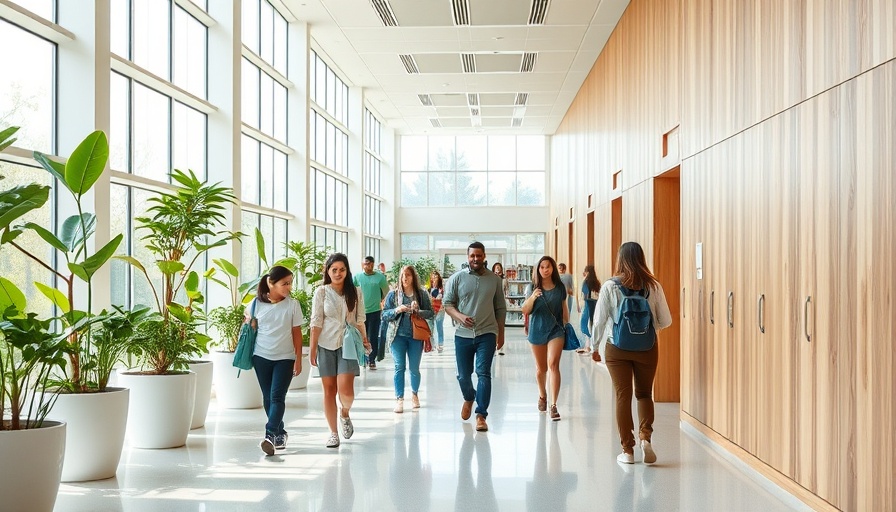
Seattle’s Groundbreaking Biophilic Design in Education
As schools around the nation grapple with the challenges of environmental sustainability and student well-being, Seattle's John Rogers Elementary School stands out as a pioneering model. Slated to open this fall, the school is not merely a place for learning, but a testament to the integration of environmental awareness into education. Positioned to be the first net-zero energy school in Seattle Public Schools, it represents a significant leap in educational architecture—blending biophilic design with innovative energy solutions.
Understanding Biophilic Design
Biophilic design is grounded in the idea that humans have an innate connection to nature. This approach integrates elements such as natural light, organic materials, and lush greenery into building designs, thereby enhancing the psychological and emotional well-being of its occupants. Sheila Hartley, a leading authority on child development, emphasizes that such environments are crucial for fostering cognitive and social growth, reducing stress, and nurturing creativity. At John Rogers Elementary, these principles shape the physical space, ensuring an educational setting that invigorates and inspires.
Connecting Students with Nature
The school’s slated 9-acre campus, with an impressive 60-foot elevation change, offers unique opportunities for immersive outdoor learning. The design process, led by DLR Group’s Shannon Payton, prioritized careful observation of the site to uphold features like daylighting and accessibility while respecting the existing natural landscaping. Enhanced by terraced outdoor courtyards that echo the flow of Thornton Creek, students will have a dynamic setting that encourages exploration—a literal blend of education and nature.
Innovative Construction Techniques and Materials
Construction of John Rogers Elementary was undertaken by Lydig Construction, which began pre-construction work in 2022. The choice of materials reflects a commitment to durability, with a façade made of a brick and metal combination. Inside, the emphasis on sustainability continues with mass timber and steel structures, ensuring an environmentally responsible building that is designed to endure while providing a welcoming atmosphere for students.
The Importance of Environmental Stewardship in Education
Integrating environmental consciousness into school infrastructure is vital in a world increasingly affected by climate change. John Rogers Elementary serves as a beacon, not only for its innovative architecture but for its role in educating the next generation about sustainability. As young minds learn within these walls, they are also inspired to carry forth principles of environmental stewardship into the wider community. This school embodies the potential for educational spaces to become catalysts for change.
Expectations for the Future
As students prepare to step into a learning environment that emphasizes connection to the natural world, the broader implications of such innovative facilities cannot be overstated. Schools designed with the principles of biophilic and sustainable design can significantly influence how students perceive their environment and their role within it. John Rogers Elementary may very well set the standard for future educational facilities, marrying ecological design with dynamic learning experiences.
For those invested in shaping the future of educational spaces, understanding the intersections of architecture, sustainability, and student well-being is crucial. Keep an eye on John Rogers Elementary as it opens its doors this fall—we may be witnessing the inevitable transformation of our learning environments.
 Add Row
Add Row  Add
Add 




 Add Row
Add Row  Add
Add 

Write A Comment